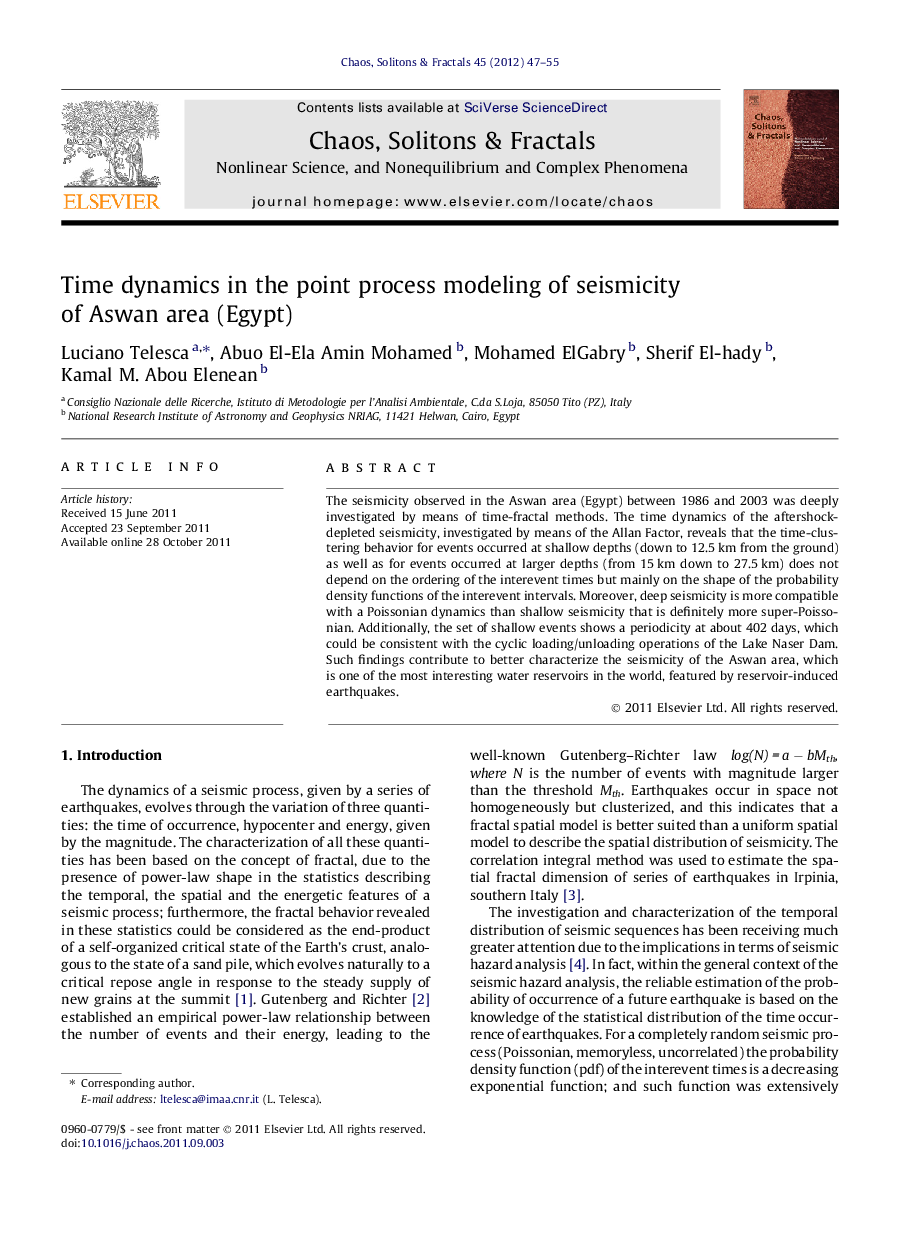| Article ID | Journal | Published Year | Pages | File Type |
|---|---|---|---|---|
| 1888779 | Chaos, Solitons & Fractals | 2012 | 9 Pages |
The seismicity observed in the Aswan area (Egypt) between 1986 and 2003 was deeply investigated by means of time-fractal methods. The time dynamics of the aftershock-depleted seismicity, investigated by means of the Allan Factor, reveals that the time-clustering behavior for events occurred at shallow depths (down to 12.5 km from the ground) as well as for events occurred at larger depths (from 15 km down to 27.5 km) does not depend on the ordering of the interevent times but mainly on the shape of the probability density functions of the interevent intervals. Moreover, deep seismicity is more compatible with a Poissonian dynamics than shallow seismicity that is definitely more super-Poissonian. Additionally, the set of shallow events shows a periodicity at about 402 days, which could be consistent with the cyclic loading/unloading operations of the Lake Naser Dam. Such findings contribute to better characterize the seismicity of the Aswan area, which is one of the most interesting water reservoirs in the world, featured by reservoir-induced earthquakes.
► Time dynamics of shallow Aswan seismic events are time-clusterized. ► Super-Poissonian behavior characterizes shallow and deep events. ► Shallow seismicity shows a cycle at about 402 days.
